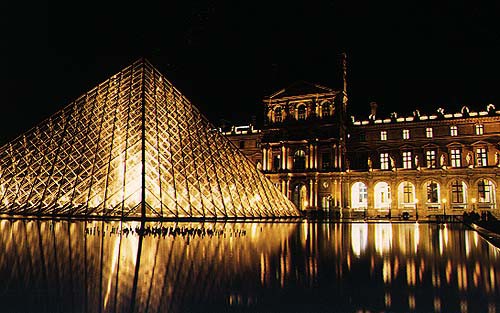The Louvre can never be a comfortable residence. I regard it as a kind of ceremonial palace in which we must store all our riches in the field of art and science, such as statues, bronze sculptures, paintings, books, archives, medals… Napoleon I.
In 1803, ten years after it was created, the Louvre was rebaptized the Napoleon Museum. And it remained until 1814 the most prestigious museum in the world, owing its reputation to the size and quality of its collections. Indeed, the exhibits included not only the previous royal collections, the confiscated riches of the Church and the objects left behing exiles but also the spoils taken by the army in Belgium, Italy, Prussia and Austria. In 1815, when Napoleon abdicated, nearly 5,000 works of art were sent back to their country of origin.
Although Napoleon has been seen as responsible for this policy of pillaging works of art, he was not in fact the instigator. The Convention Nationale had suggested such action as early as 1794 as a solution to the defeated party's inability to pay its war debts. The Directoire pursued the same policy and encouraged Napoleon when engaged on the Italian campaign in Italy, to “endow the capital of freedom with the masterpieces to which Italy owes its reputation, so that the charm of the soothing and consoling arts may be added to the shining military trophies.”
Under Napoleon's rule, the requisitioning of art expanded to take place on a pan-European scale. The Emperor consequently ordered a series of alterations to the Louvre in order to accommodate the treasures. Reymond and Percier, followed by Fontaine, were commissioned to prepare a museum devoted to Antiquity which was to be opened in 1800. Work included: the building of a staircase and a hallway leading to the “Salon Carré” (only the hall known as the Percier and Fontaine room remains today); refurbishment of the Great Gallery (notably overhead lighting, large double archways supported by columns dividing up the space). In 1805, the majestic entrance to the Napoleon Museum received a bust of the Emperor by Bartolini.
Under the direction of the exceptional administrator, Dominique Vivant Denon, the collections grew as a result of many donations, purchases, and commissioned works. The restitution of the stolen goods to the coalition in 1815 however significantly reduced one of the Empire's greatest achievements. After a series of very difficult talks, however, France was allowed to keep a few hundred works, including a great number of drawings. The most famous of these pieces which stayed has to be “The Wedding at Cana” by Veronese which was kept in return for a painting by Lebrun.
The Louvre possesses a great number of works of art which were either bought or commissioned during the Consulate and the Empire, notably “Napoleon at Eylau” by Gros, “Empress Josephine in Malmaison” by Prud'hon, “The Coronation” by David, “The Wounded Cavalryman” by Géricault, to name but a few of the most famous paintings of the French school.
Louvre Museum, First Empire


